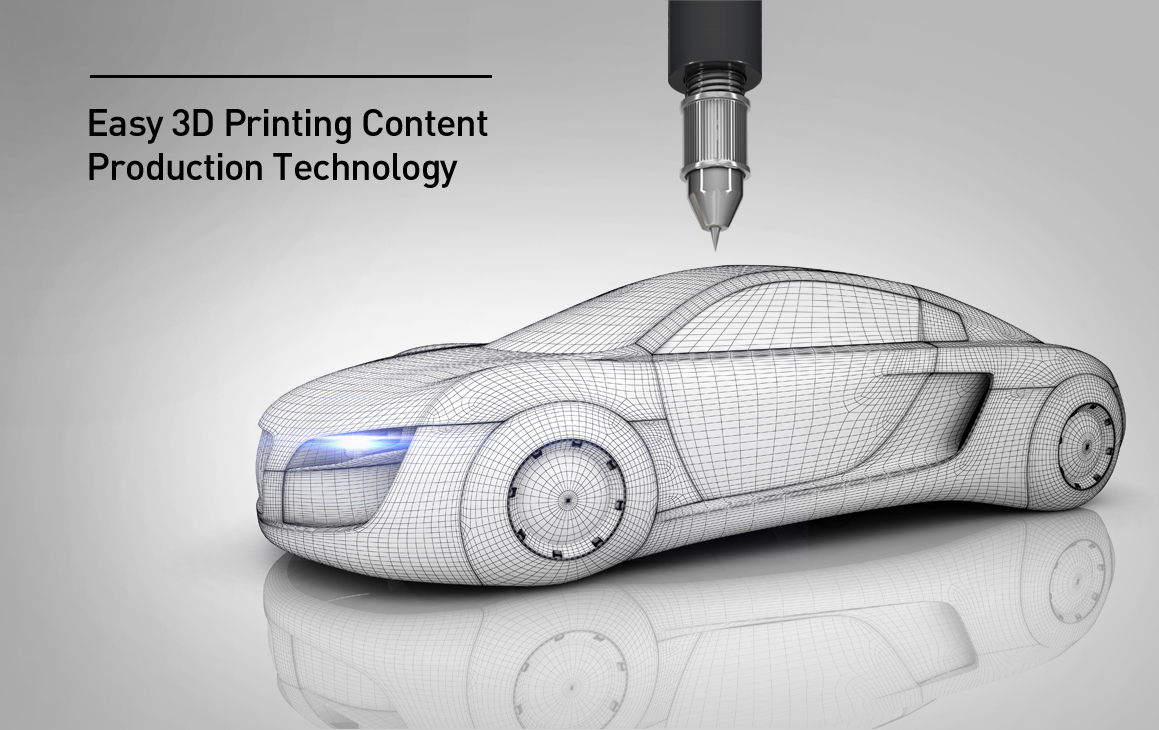

K-ICT 3D Printing Conference 2015
It is much more difficult to produce content for 3D printing, than classical 3D content,
because it is not easy for non-experts to handle the complicated process of mechanically
or manually scanning an object, producing actual 3D content, and revising it for 3D printing.
However, it has now become possible for laymen to produce 3D content.
The new software for content creation, simulation, and 3D scanning
enables non-experts to easily print their creative ideas in 3D format,
simply by operating the scroll bar to realize what they want into 3D images.
Also available on mobile platforms, this new technology was open to the public and
demonstrated at the K-ICT 3D Printing Conference 2015, held on November 4 in Seoul.
Software for 3D Printing Content Creation, Simulation, and Scanning
The 3D content creation tool enables users to edit objects on personal computers,
mainly by creating models with a designer’s creative design and mathematical methods(non-linear distortion).
As a result, users can easily transform defined properties of object models, such as styles, height,
and width, by manipulating the simple graphic interface with the scroll bar.
In addition, the 3D printing simulation tool helps create a functional 3D model,
a feature introduced for the first time in Korea, through automatic verification and
revision of durability, stability, and other properties required for 3D printing.
Specifically, after printing a 3D model, users can mark the fragile parts(durability),
make the model stand on its own by adjusting the center of mass(stability)
and combine partial prints if the model is bigger than the printable space(assembly).
The 3D scanning tool automates the major stages of post-processing technology,
which had been manually performed, to create 3D printing models from the scanned results.
As the technology allows users to easily create a model based on 3D scanning and post-processing,
it is expected to help new business items in various areas: customized shoes; body-tailored prosthetic hands, foot and legs as well as wigs;
3D models for fitting used by online shopping malls; prototypes for verifying part shapes; and convenient living products with transformed shapes.

3D Printing in Everyday Life
“The newly developed technology will become available to the public through mobile applications and cloud services,”
explained Dr. Jin Sung Choi, Director of the Convergent Content Research Department at ETRI.
“The software will be used as learning material to allow 3D scanning, creation
and printing at schools, as well as for general use by the public.”
In partnership with J2YSoft, a beneficiary of technology transfer, ETRI will introduce a system to automatically
create 3D individual avatars and produce customized 3D figures delivered by 3D printing.
This new technology was developed as part of the project to develop technology
for creating and editing 3D content based on real information for 3D printing,
sponsored by the Ministry of Science, ICT and Future Planning.













